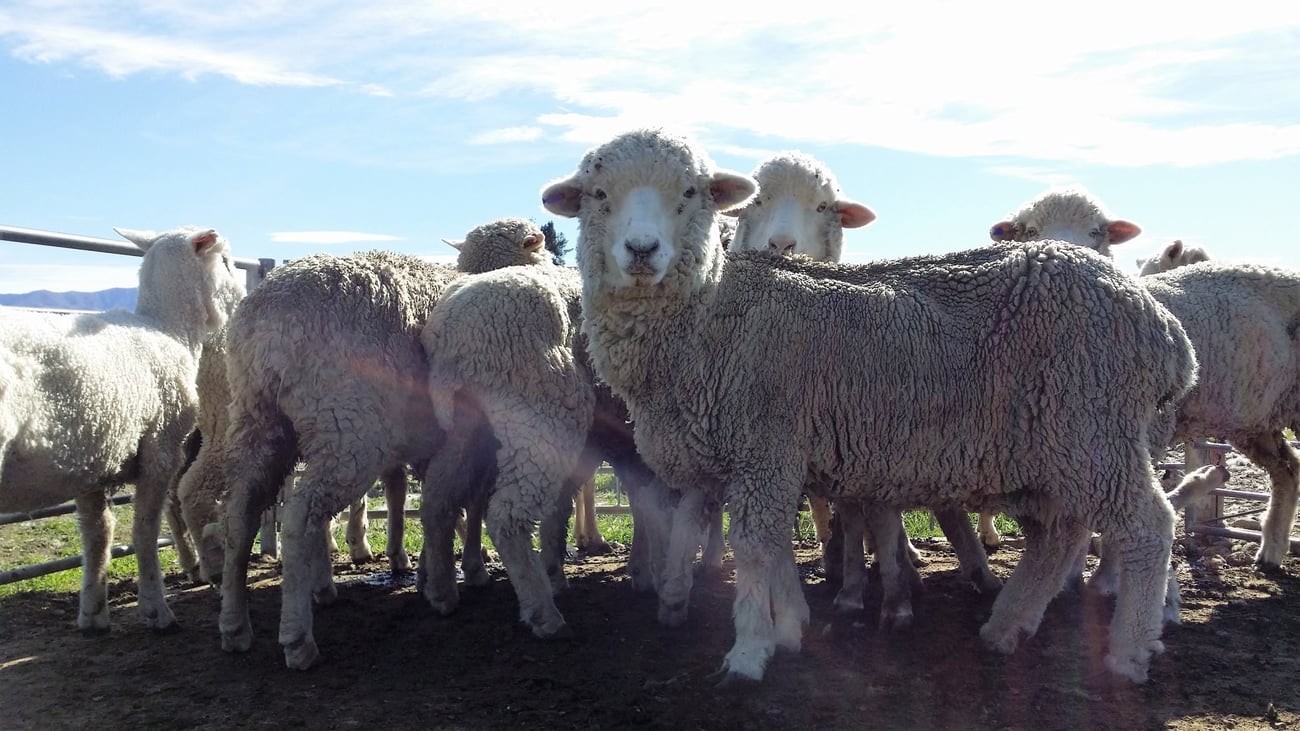Deer milk, better gates and the efficiency of agritech: the best innovations from Fieldays

Top image credit: Ben Mack
It’s about as “Kiwi as” an event can get: Fieldays.
A country fair on steroids. A semi-rural extravaganza of all the latest and greatest innovations out there. An event like no other that everyone needs to experience at least once.
No matter how you categorise it, a lot goes on at Fieldays. And, us at Idealog being all about innovation and creative business, we thought it’d behove us to offer up a run-down of our favourite things from the 2018 edition, which just so happens to also be its 50th anniversary. You’re welcome.

P?mu deer milk
Chef Geoff Scott said it’s rare to see excitement among the chef community but when top chefs tasted deer milk for the first time at Fieldays, a buzz was in the air.
“It is rare for chefs to work with a completely new product, which has never been used before. For most of us tasting P?mu deer milk, a world first, was an opportunity we don’t often get in our careers,” Scott said.
P?mu deer milk won the Grassroots Innovation award at Fieldays, capping an exciting week for the product.
“This is the sort of innovation the food industry is looking for, and which builds new creations and food movements. P?mu deer milk is definitely in that category,” Scott said.
He said the sensation that P?mu deer milk creates on the palette is what makes it so special.
“It is like drinking extra silky cream.”
Des Harris of The Hunting Lodge agreed. “The flavours are so rich and really appeal to chefs. It’s important for us to source local New Zealand produce and knowing this type of food innovation is happening in New Zealand is exciting. I am thinking of adding a wild duck egg and P?mu deer milk crème brulee to the menu.”
Then there was Shaun Tayugi of Harbourside. “I can’t wait to play around with it more to come up with items of our menu. I’m hoping to have it as a feature menu item from July this year.”
And Ben Bayly of Baduzzi and The Grounds: “This is definitely a world class ingredient, and should not be messed with and should be treated like gold.”
You get the idea: some of Aotearoa’s think deer milk could be the next big thing. And for proof: it just so happened to win the Innovation Grassroots award at this year’s Fieldays.
P?mu is the new name for Landcorp, and the M?ori word for “to farm.” Deer milk is currently only available at restaurants in Auckland and Wellington.
The result of three years of trial and testing, heavily involved were partners Sharon and Peter McIntyre, who farm near Gore in Southland.
Chief executive Steve Carden said that deer milk was the sort of innovation that the agriculture sector needs to invest in to make sure we remain competitive. “As an industry, agriculture needs to be changing and evolving what we produce in response to consumer demand,” he said. “With its high fat content and protein levels, P?mu deer milk is ideal for food service, cosmetics and other uses that we are exploring. We are seeing a unique product like P?mu deer milk, turned into the sort of potentially high value, niche export product that is the ‘holy grail’ for the primary sector. It provides an earnings multiplier way above selling the product at the farm gate.”
Carden says that while the deer milk has had positive feedback, the challenge is making such a product commercially viable. “We believe we are on the cusp of something very exciting.”
Speaking of milk, cows say moo, but what sound do deer make?
‘Gudgeon guard’
A team of St Paul’s Collegiate School agribusiness students were named young inventors of the year – and it’s not hard to see why.
Year 13 students Edward Sclater, Thomas Nicholson, Spencer Clayton-Greene and Jarrod Mealings designed the product ‘gudgeon guard’ – a device that fits over a gate gudgeon to help lift it off the ground.
“The gudgeon extension is good for farmers of dry stock and dairy who experience a lot of problems with gates that slump or scrape across the ground due to wear and tear,” said Nicholson. “Rather than having to replace the entire gate system, these guards can be fitted over the top of each gudgeon to help lift the gate up and get it swinging properly again.”
The group of young innovators developed the product in one of their agribusiness classes at St Paul’s. New Zealand National Fieldays Society CEO Peter Nation spoke of the importance of innovations at Fieldays. “One of the main reasons the New Zealand agricultural industry is so recognised and respected around the world is because of the innovations coming from awards like these.
“The people here today are shaping the future of farming and will be making major changes in the industry in another 12 months.”
Another group of St Paul’s students were also entered in the Innovation Awards, having developed a steel rig invention that easily marks out a fence post to show where wires should be stapled.
The Agribusiness programme was pioneered by St Paul’s in collaboration with Dairy NZ, Beef + Lamb NZ and a number of key industry leaders. It is currently being rolled out progressively to schools throughout the country and provides students with the opportunity to learn more about the primary industries.
The prize for the Young Inventor of the Year award is $1,000 in cash, which the students plan to use towards developing their product further.

Members of the Gudgeon Guard team, from left to right: Jarrod Mealings, Edward Sclater, Spencer Clayton-Greene and Thomas Nicholson.
The future of farming
Us being Idealog, we talk a lot about the future of things. The future of work. The future of business. The future of cities. The future of freeze-dried tomatoes. You get the gist.
One of the consistent themes of Fieldays – despite its rural focus – is looking towards the future. At a time when farming is facing a number of challenges globally, some of the country’s key players in the innovation sector – folks like Callaghan Innovation – say Aotearoa has a unique opportunity to capitalise on its reputation as one of the world’s four key agritech locations.
New Zealand is seen as one of four locations to watch for agritech solutions alongside Silicon Valley, Boston, and Amsterdam, according to the Startup Genome Report 2018. This is based on our capabilities in agriculture, our primary export economy and our natural resources – so says Hemi Rolleston, Callaghan Innovation’s sectors general manager. “We are also acknowledged for our ability to solve problems quickly and efficiently in a suitably regulated, yet agile private and public innovation ecosystem. We can capitalise on this to turn our $1 billion of agritech exports into a market of many billions.
“The demand for agritech solutions is growing in New Zealand as the industry starts to understand the benefits. However, a significant amount of the products we use are imported and we have a big job ahead to grow our own agritech sector to take advantage demand.
“A recent Callaghan Innovation white paper, for example, predicts artificial intelligence will have an extreme impact in agriculture over the next decade. We need to ask how we can be a leader in these kinds of solutions.”
While the primary sector accounts for about 70 percent of New Zealand’s exports by value, only about five percent of businesses in agriculture, forestry and fishing invested in research and development (R&D) in 2016. This is down from a peak of nine percent in 2012 and compares with 18 percent of manufacturing businesses which invested in R&D in 2016, according to data from Stats NZ.
According to Rolleston, the agritech sector can build on its success stories, many highlighted in the 2018 Fieldays Innovation Awards. Recently these have included agricultural robotics startup Robotics Plus, which has attracted Yamaha Motor Co. as an investor, and BioLumic, creators of the first ultraviolet crop yield enhancement system, which has raised $5 million in Series A funding.
Also accoridng to Rolleston, there are other signs the industry is gearing up. Callaghan Innovation has engaged with 25 percent more agritech clients in the past year, and a third of the agritech companies it helped in 2017 were startups. Of the $86 million invested in New Zealand early-stage businesses in 2017, 10 percent was directed at agritech businesses, well above the global average, as per PwC and Callaghan Innovation data. “New Zealand Inc must continue to find ways to cultivate a continuous agritech startup pipeline, and to encourage agricultural businesses to invest in R&D.
“We’ve always had a number 8 wire culture in farming, but it is crucial we power that up with science and technology, particularly in order to keep pace with our international competitors who are investing heavily in agritech innovation.”

Optimism
We like positivity – and it seems there’s a fair bit of it at the moment.
A new report into the state of the rural economy finds that one-third of rural businesses expect more sales in the next quarter, while 16 percent predict sales will decline.
The annual MYOB Rural Business Monitor also finds some optimism about the year ahead, with 38 percent of rural business owners predicting revenue will be up in 12 months’ time, while just 13 percent expect their revenues to decrease over the next 12 months.
“In the face of international uncertainties, impending trade wars, rising fuel prices and immigration cuts, New Zealand’s rural sector – and the industries that work to support it – continue to demonstrate strength, optimism and resilience,” said MYOB New Zealand general manager Carolyn Luey.
The report finds 29 percent of rural businesses expect to increase investment in plant and equipment in the coming year, while 14 percent will invest in IT systems and processes. However, hiring intentions in the sector are constrained, with just 7 percent of rural businesses looking to take on new employees.
MYOB also looked at attitudes to technology in the rural sector and finds connectivity, automation/robotics and drones were the top three trends most likely to impact their industry over the coming decade.
“MYOB has been involved with New Zealand’s rural-based businesses for more than two decades. During that time we’ve seen the growing importance of technology to the rural sector,” said Luey. “Although data doesn’t make the grass grow, it’s certainly important for running the business. It’s no surprise that connectivity came out on top as the most important tech trend.”

Source: MYOB

Source: MYOB

Source: MYOB





